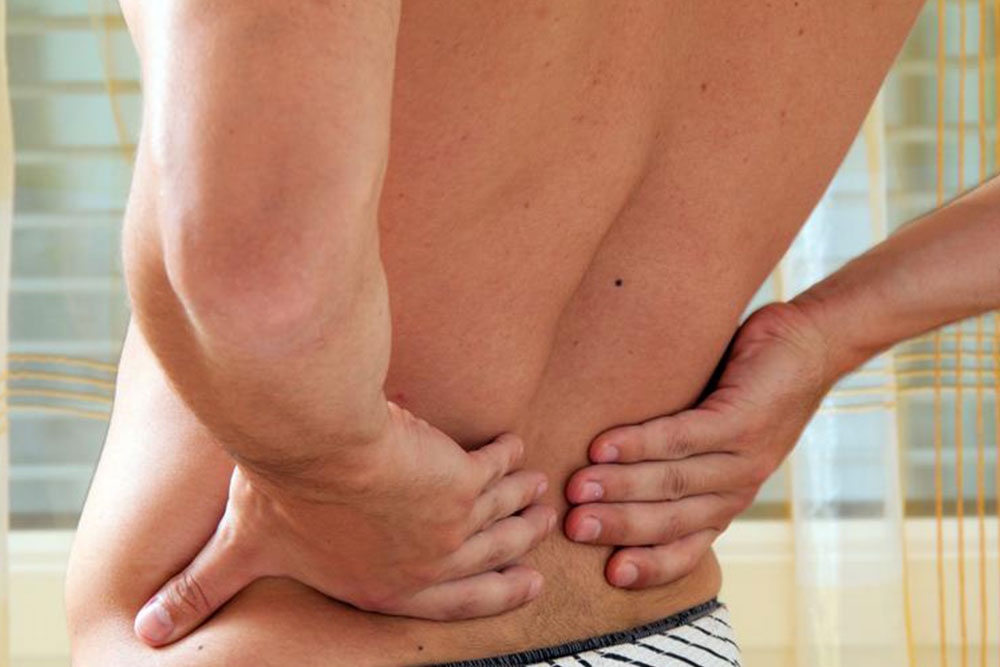Comprehensive Approaches to Managing Persistent Endometriosis Pain
This comprehensive guide explores effective methods to manage persistent endometriosis pain. Combining lifestyle adjustments, dietary tips, stress reduction, and alternative therapies, women can significantly improve their quality of life. Expert advice emphasizes a multi-faceted approach tailored to individual needs, helping to alleviate discomfort and enhance well-being amid this chronic condition.

Comprehensive Approaches to Managing Persistent Endometriosis Pain
Endometriosis is a complex and often debilitating condition that affects many women worldwide. Characterized by the abnormal growth of uterine tissue outside the uterus, this condition can lead to the formation of nodules or spots on nearby organs, causing intense and often chronic pain. For those suffering from endometriosis, understanding and implementing effective pain management strategies is crucial for improving quality of life. Despite the absence of a definitive cure, a combination of lifestyle changes, dietary adjustments, stress management techniques, and alternative therapies can significantly alleviate symptoms.
This article explores proven and emerging methods for managing persistent endometriosis discomfort, providing practical tips for women battling this condition. With roughly 1 in 10 women aged 12 to 60 experiencing symptoms related to endometriosis, awareness and knowledge are vital in fostering better health outcomes.
While routine menstrual cramps are common, endometriosis-associated pain tends to be more severe and persistent. Currently, there is no universal cure, but various strategies can effectively manage pain and improve daily functioning. Here, we outline practical and evidence-based approaches to ease the burden of this chronic condition.
Incorporate Regular Physical Activity
Engaging in consistent exercise routines can be instrumental in reducing endometriosis-related pain. Physical activity benefits the body in multiple ways, including improving circulation, reducing inflammation, and boosting mood through the release of endorphins, which are the body's natural painkillers.
Enhances oxygen and nutrient delivery throughout the body, promoting healing and vitality.
Increases blood flow to pelvic organs, helping to lessen pain and cramping.
Helps lower stress hormones like cortisol, which can exacerbate symptoms.
Reduces estrogen levels over time, which may influence endometrial tissue growth.
Stimulates the release of endorphins, providing natural pain relief.
Activities such as swimming, brisk walking, cycling, and yoga are particularly beneficial. Establishing a routine that includes these can be a sustainable way to manage discomfort and enhance overall well-being.
Optimize Your Diet for Symptom Relief
Diet plays a pivotal role in managing endometriosis symptoms. Specific foods can influence hormone levels, inflammation, and prostaglandin activity—all factors involved in pain severity.
Increasing consumption of green vegetables, fruits, and fresh foods has been linked to a reduction in severe pain episodes by nearly 40%. These foods contain antioxidants and anti-inflammatory compounds that support tissue health.
Conversely, limiting red meats, processed meats like ham, and beef may decrease pain risk significantly. Some studies suggest that intake of these foods could double the chances of experiencing high-intensity pain.
Including omega-3 fatty acids from sources like salmon, walnuts, flaxseeds, and chia seeds can further reduce pain by approximately 22%. These healthy fats have anti-inflammatory properties that benefit women with endometriosis.
Adopting a balanced, nutrient-rich diet tailored to hormonal and inflammatory balance can serve as a cornerstone of endometriosis pain management.
Manage Stress Effectively
Chronic stress has a well-documented impact on hormonal regulation and immune function, potentially worsening endometriosis symptoms. Employing stress reduction techniques can help mitigate these effects.
Progressive muscle relaxation involves systematically tensing and relaxing muscle groups to achieve a calming state.
Autogenic training teaches body awareness and control over vital functions like heartbeat and blood pressure via guided imagery and affirmation.
Deep breathing exercises—slow, diaphragmatic inhalation and controlled exhalation—activate the parasympathetic nervous system, promoting relaxation.
Visualization or guided imagery transports the mind to peaceful settings, reducing anxiety and pain perception.
Regular practice of these techniques fosters resilience against pain flare-ups and improves emotional health, helping women to better cope with daily challenges posed by endometriosis.
Explore Safe Alternative and Complementary Therapies
While scientific evidence varies, many women find relief through complementary therapies. Consulting healthcare providers before starting any new treatment ensures safety and appropriateness.
Osteopathic manipulative therapy (OMT), using gentle hands-on techniques, can relieve muscular tension and joint discomfort associated with endometriosis.
Acupuncture, rooted in traditional Chinese medicine, stimulates the release of endorphins and has been reported to reduce inflammation and pain.
Supplements such as vitamin B6, magnesium, or herbal remedies like turmeric and Chinese herbs may provide additional relief, but should be used under medical supervision.
Additionally, pharmacological options like analgesics and hormonal treatments are prescribed by healthcare professionals to manage severe symptoms. Combining these with lifestyle changes often yields the best results for symptom control and improved quality of life.
In summary, managing endometriosis pain requires a comprehensive approach tailored to individual needs. Regular exercise, a healthy diet, stress management, and complementary therapies form an effective arsenal against persistent discomfort. Always consult healthcare providers before implementing new strategies to ensure safety and maximized benefits.





